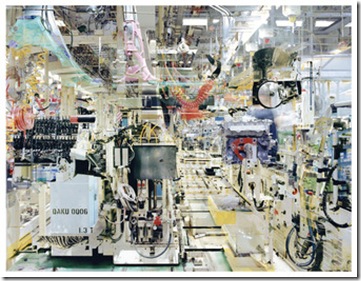Congratulations on your assumption of leadership at the Lean Enterprise Institute.
The Lean Enterprise Institute has a deservedly unique place in the community of people working to learn and apply the Toyota Production System. The LEI, and the precursor work at M.I.T., by Jim Womack and others, has been largely responsible for moving the Toyota Production System from the domain of a few consultants into mainstream thought. The term “lean,” for better or worse, is now firmly established all in discussions about business management and production efficiency.
From my perspective, though, the LEI is at a crossroads. While what I am offering here is my opinion alone, this platform has given me great opportunities to connect with people across the spectrum of the “lean community.” This is only my opinion, but it was not formed in isolation.
Background
In the early days, the LEI – and Jim Womack especially – took on an almost evangelical role. The initial workbooks – Learning to See, Creating Continuous Flow, Creating Level Pull, Making Materials Flow, had the effect of creating a near canonical definition of “lean.” We could (and did) debate it, but it was pretty clear what the LEI meant by the word.
The message of those early workbooks, carried forward from Lean Thinking, was clear: “We are still learning this, and sharing it with you as we go.”
Perception
Today, however, out here in the world of steel-toe shoes, safety glasses (and yes, scrubs and surgical masks), the LEI has developed a reputation for being insular – not particularly open to the idea that people outside of the LEI’s inner circle might have gained deeper knowledge that moves beyond the message of 1999-2001.
In addition, the LEI seems to have drifted from being a standard bearer with a crisp message to becoming a specialty publisher, much like the Productivity Press of the late 1990’s.
If the role of being a specialty publisher is what the LEI is striving to become, then that is great. But it is nothing special and, over time, I feel the brand will dilute and the LEI’s name on a book will mean little more than McMillan, Wiley or Free Press. Even today, I (and others) no longer assume that just because the LEI is publishing a book that it is automatically worth reading or using as a reference.
But the biggest tragedy is lost opportunity to lead.
Today, even though the founders coined and popularized the term, the Lean Enterprise Institute no longer represents the final word of what “lean” means. Nobody does.
Is “lean” a synonym for the Toyota Production System or Toyota’s management system? With all of the reference to Toyota, I would think that is the intent. But there are many well qualified experts out there who make a good case that the LEI’s publications and message are, at best, a subset of TPS. Others argue that “lean” and TPS are fundamentally different in some way.
The result is that “lean” means whatever someone with an opinion says it does.
The LEI has chosen not to engage in this debate. That is well and fine, but at the same time the message emerging from Cambridge is increasingly unfocused – as the shift (drift?) is made from “standard bearer” to “publisher and promoter.”
Therefore, I believe that in the eyes of the world, the LEI no longer owns “lean” and chooses (by action and inaction) to not define it.
Other organizations, such as the AME and SME, are claiming to hold canonical definitions as they work to establish formal “certification” programs to compete with the ASQ’s ownership of “Black Belt.” (I often wonder if Taiichi Ohno would have been able to get a “lean certification” by the standards offered by these organizations.)
The original academic discipline of continuously developing, testing, pushing, revising the current understanding – the very foundations of the LEI out of M.I.T.- seems to have frozen in place – as though the initial research that led to the LEI’s formation is regarded as the end-all.
Challenge
So I have some questions.
One of the central tenants of “The Toyota Way” is challenge.
What is the challenge for the LEI? What is that ideal state that the LEI is striving to become?
Is it to be a successful publisher and promoter of books? Or is there still a sense of a higher purpose?
If it is the later, then I would like to suggest that this higher purpose is not felt “out here” in the world.
I, for one, would like to see the LEI return to a position of being the baseline authority. But this means giving up the idea that there is a static understanding which has already been grasped and simply needs to be put into practice. There is simply too much new knowledge being gained for that position to hold.
Ironically, the Toyota management system itself is built on foundation of striving to learn what is not yet understood. It would be appropriate for the LEI to embrace the same thinking. Just as “no problem is a big problem,” I would argue that “We already know” means “we have stopped learning.”
Ideas
So what would that look like?
Define “Lean” in non-abstract terms.
To regain leadership, the first step would be to describe the target of “lean” as a testable (and refutable) model. When we say “Lean,” it should define what are we striving for.
What does it look like when the organization is truly engaged in continuous improvement? This isn’t about describing tools, or results, but rather the key elements of a system and how they interact with one another – including the process of management and leadership.
What if we put John Shook, Mike Rother, Steve Spear, Jeff Liker, Michael Ballé, Art Smalley in a room – real or virtual – with a skilled facilitator and a task to try and isolate the five or six key operational elements that are in place in an organization that is truly “getting it.” Each of these people brings a significant piece of the puzzle. Could they fit them together?
The idea would be to develop a solid, testable, working theory of what “Lean” means as a general-case model of the Toyota Production Management System. This would be the LEI’s official position. Sure, others have their views, but this is ours, and this is how we are testing it. Put a stake in the ground, then be willing to continuously test it, review it, and update it.
I certainly have my own ideas on what those key elements are are, but would love to facilitate that conversation and see the results. 🙂
Let’s acknowledge that we learn about TPS by continuous application of the scientific method – research, developing and testing hypotheses, and this is not static knowledge. We have nothing but our best current understanding, and as we apply it, we learn what we do not know. True senseis are those who have mastered, and teach, the process of learning.
Define a process.
Having a theoretical base is not enough. For it to be practical, we also must learn how to put it into practice. We are dealing with two separate things here.
One is the working theory of how TPS works as a management system.
The other is the approach used to deploy that process into an organization that has a long history of not doing it. In this, we must move outside of Toyota’s world and into the very messy world where the people who are practicing these things are isolated from one another, and have little or no coaching or even emotional support.
This means developing another theoretical base – one for deployment.
Lean Thinking outlined a sort-of process with five steps, but I contend those simply describe a sequence of tool deployment and do not address a management system. In those five steps “Pursue perfection” is a core tenant, but has never been well described – at least not until the publication of Toyota Kata. It is time to reflect on the last 15 years, review the approach, and incorporate what has been learned since.
Further, enough companies have tried the sequential-tools-implementation approach over the last couple of decades, that we have a pretty good idea that it doesn’t work very well. But have we truly examined why, beyond the platitudes of blaming “insufficient management commitment?”
Learning to See actually started this process. It outlined a pretty good process for gaining “current condition” understanding. I would certainly be comfortable in saying that if this process does not work to that end, it is more because of flawed application than a flawed process. But subsequent workbooks started down the path of describing the mechanics in ways that largely left out the people and the leadership processes.
So let’s return to the original concept of setting out a path for learning.
Then continuously test
Now comes the tough part. There must be an acknowledgement that, as much as this process captures what we have learned, it is likely imperfect. But we do not know where or how the flaws will show up. They will only become apparent in practice and application.
The only way to widely and continuously test a theoretical base for deployment is to fully engage a population of practitioners. These are the people who are taking the TPS theory and applying it to uncontrolled environments “in the wild” – the actual factories, hospitals, service providers out there.
To be a TPS-based process, the deployment process itself has to have mechanisms for built-in checks, both in application (are we doing it right, if not what is stopping us?) and outcomes (did it work, if not, what actually happened?).
The community of practitioners are going to be the ones on the virtual assembly line, with one hand on the andon cord. How quickly can the community be engaged to respond to issues, swarm the problem, restore to the standard, and then seek to understand what was not previously understood?
What I do know is that the LEI has one of the most active technical discussion forums out there. A webinar attracts thousands of listeners. An email with a link generates a huge spike in hits to the target site. How can that network be organized, focused and harnessed?
I don’t actually know. But if the LEI were to assume a position of leadership and establish a good vision and progressive target conditions to develop the community of practitioners into a team, I am willing to wager that the kaizen process, if properly applied, would work for that as well.
Paradigm shift
This is much more than organizing conferences, webinars, and publishing books written by consultants. Truthfully, anybody can do that, and frankly, there are more than a few who do those things better than the LEI does.
But the fleeting opportunity is one to regain a position of leadership, and truly engage people in ways no one has ever done. But isn’t that the core challenge of the Toyota approach in the first place?



